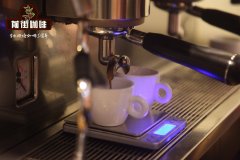Decaf treatment? What is the carbon dioxide supercritical treatment of decaf coffee? Dioxin
Brief introduction of Qianjie Coffee carbon dioxide Supercritical treatment of decaf Coffee
The step of low-cause treatment can only be carried out in the state of sub-coffee and raw beans. Today, there are three main types of treatments to remove caffeine: traditional / European treatment (European Process), Swiss water treatment (SWP,SwissWater Process), and carbon dioxide supercritical treatment (CO? Process). All three methods are very effective in removing most caffeine, leaving only 20.3% of the total amount of original caffeine in coffee beans. Today, we will focus on the carbon dioxide supercritical treatment of decaf coffee.
Two natural elements, pure water and carbon dioxide (a mixture of the two we often call soda) are used to extract caffeine from raw coffee beans. The founder of this method is Kurt Zosel.
In chemistry, we also known as supercritical CO2 extraction technology, supercritical carbon dioxide (hereinafter referred to as SC-CO2) is hundreds of times the density of gas, and close to the density of liquid, but its viscosity is similar to that of gaseous carbon dioxide. Its diffusion coefficient is about 1% of the gas, which is hundreds of times larger than that of the liquid. Therefore, the movement (Mass transfer) or distribution of substances is faster than that in liquid solvents.
This method was developed to extract caffeine from coffee beans because of the following characteristics:
1. The critical temperature of carbon dioxide is 31.1 ℃ and the critical pressure is 73 atmospheric pressure (Atm). It is suitable for the extraction of thermally unstable substances because it is close to the critical temperature at room temperature. It has a good effect on the retention of aroma substances in coffee.
two。 Carbon dioxide is an inactive gas, has no flammability and chemical reactivity, has no residue, is harmless to the human body and does not cause environmental pollution.
3. It is easy to produce high-purity carbon dioxide for supply and cheap.
The method of supercritical CO2 extraction of caffeine is to let coffee beans absorb water, expand to twice the size, caffeine molecules loose in the bean body, add carbon dioxide and give more than 100 atmospheric pressure (Atm) in water, so that water and carbon dioxide are mixed to create a soda environment. Carbon dioxide attracts caffeine molecules like a magnet, and when caffeine is captured by carbon dioxide, caffeine begins to move. Carbon dioxide is highly selective and does not capture carbohydrates and proteins in coffee beans, because carbohydrates and proteins are the main components of flavor and smell in coffee beans. When it dries naturally after the extraction, caffeinated water can be easily separated from caffeine and used for other commercial purposes.
Advantages of this method:
1. The extraction efficiency of caffeine is very high, and there is no chemical pollution.
two。 It will not have any chemical changes with carbohydrates and proteins in coffee beans.
3. Its by-product (caffeine) is natural and 100% recyclable.
Important Notice :
前街咖啡 FrontStreet Coffee has moved to new addredd:
FrontStreet Coffee Address: 315,Donghua East Road,GuangZhou
Tel:020 38364473
- Prev

What is Decaf Coffee? What are Decaf Coffee Treatments? How about decaf?
Professional coffee knowledge exchange More coffee bean information Please pay attention to coffee workshop (Weixin Official Accounts cafe_style) Qianjie coffee brief description What is decaf coffee, decaf coffee treatment methods? How is decaf coffee made? Decaf coffee is coffee that has removed more than 90% of caffeine, which is called decaffeinated coffee. European law low
- Next

Espresso | what is the effect of changing the water temperature of the Italian machine on espresso
Decades of trial and error have shown that most people prefer to use 85-95C water to make espresso. For lighter roasted coffee, the temperature range is usually narrower than 90-95C. However, in this small range, there are still quite a lot of taste differences to be explored. The higher the temperature, the lighter the sweetness of the coffee and the stronger the acidity; the lower the temperature can reduce the scorching taste when roasting, otherwise the coffee will be more acidic.
Related
- What is the meaning of lactic acid fermentation with coffee bean treatment?
- How to judge the state of foam by sound?
- How does the latte pull out the unicorn pattern? Come to get for a little trick to improve the flower pull!
- Will flower pulling affect the taste of the latte?
- Do you know the history of coffee?
- The difference between honey treatment and sun washing what is raisin honey treatment?
- What kind of milk can a novice use to make coffee foam to keep the foam longer? The correct method and skills of milking tutorial sharing
- Why do washed coffee beans taste sour? Flavor characteristics of washed Coffee
- Introduction to the skill of how to practice the size and height of water injection around the circle of hand-brewed coffee
- How do beginners practice coffee flower drawing from scratch?

